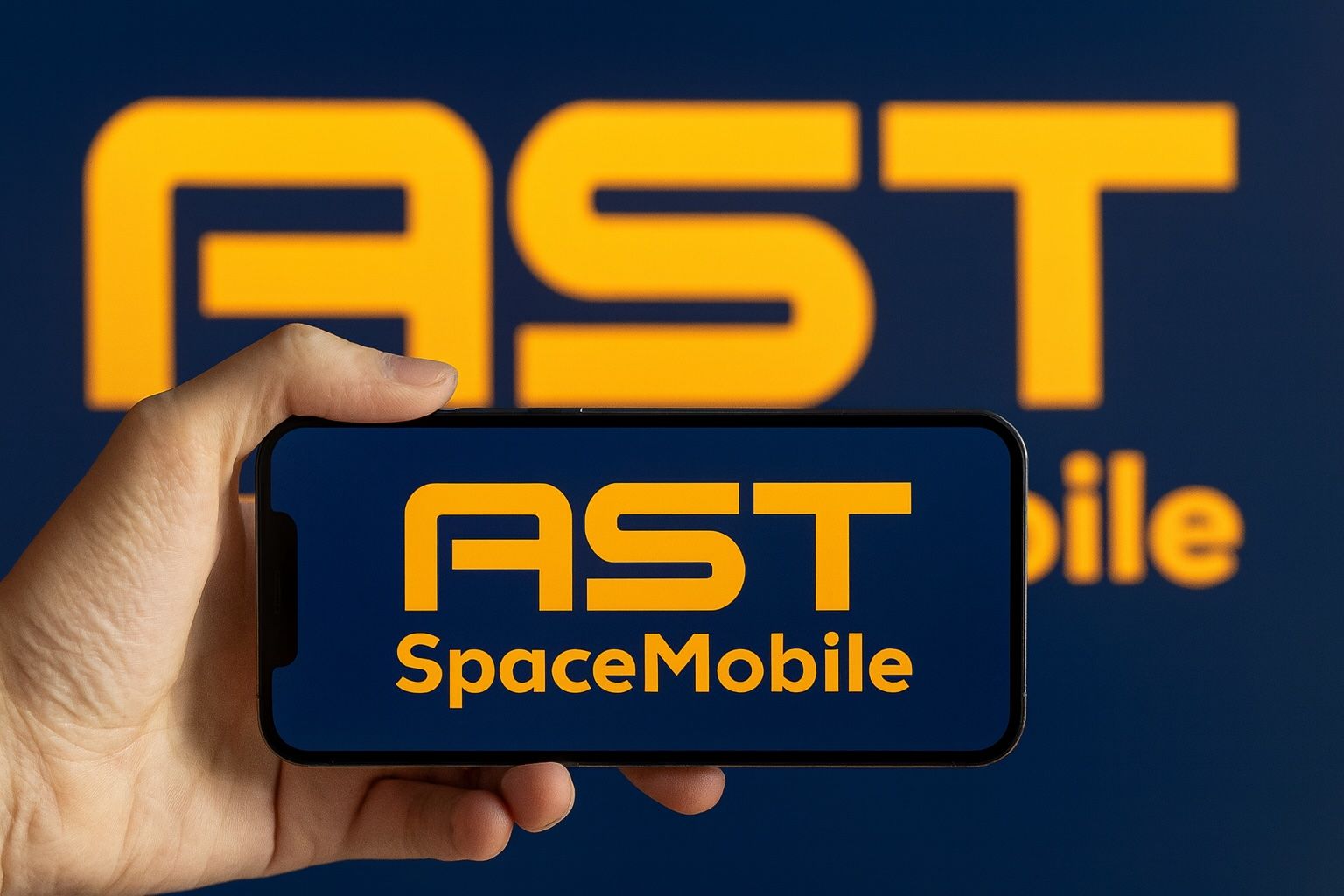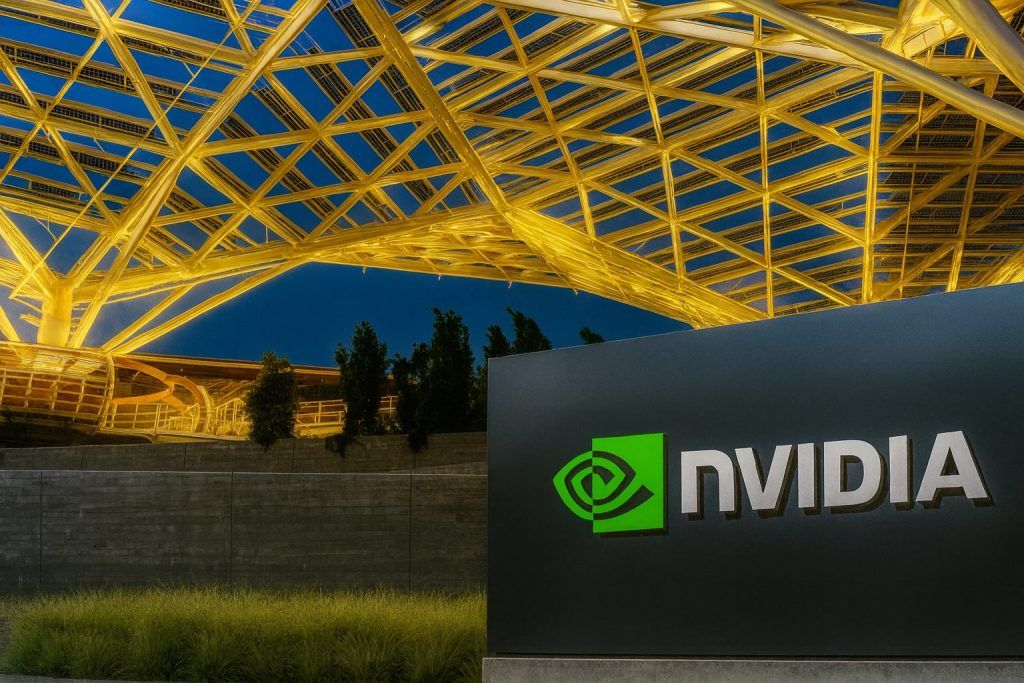- ASTS nears $100 on satellite hype: AST SpaceMobile stock surged to an intraday record ~$99 this week after announcing a Verizon partnership for space-based cellular service [1] [2]. Shares have jumped over 300% in 2025, making ASTS one of the year’s top performers.
- Massive year-to-date gains: The stock is up roughly 200–300% YTD (from ~$30 in late 2024 to around $90 now) [3], vaulting AST SpaceMobile’s market capitalization to ~$30 billion [4] despite minimal current revenue. ASTS has posted new highs in 10 of the past 11 sessions amid space-to-phone connectivity excitement [5].
- Satellite breakthroughs & big deals: AST’s BlueWalker 3 test satellite enabled the first-ever direct 4G/5G voice and video calls from space on standard smartphones [6]. The company plans to deploy 45–60 satellites by 2026 to launch its global SpaceMobile broadband service [7]. Major carriers like Verizon, AT&T, Vodafone and Bell Canada have signed on to use AST’s network in remote areas [8], validating its technology.
- Analysts pump brakes on valuation: Wall Street is divided. Barclays raised its price target to $60 (Overweight) after AST’s progress [9], arguing satellite broadband could command premium pricing. But others see the stock as overheated – consensus 12-month target ~$45 [10] implies ~50% downside, and short sellers have built up >20% of ASTS’s float in bets against the lofty valuation [11] [12].
- Cash burn and outlook: AST SpaceMobile remains pre-commercial with tiny revenue (~$5 M last year) [13]. It’s rapidly spending to build its constellation, raising $575 M in debt and filing to sell $800 M in new shares this year [14]. The company forecasts an initial ~$50–75 M in pilot revenues in late 2025 [15], with analysts expecting Q3 sales ~$20 M (up 17× YOY) [16]. Bulls say AST’s tech could unlock $1B+ annual sales within a few years, but execution risks are high.
ASTS Stock Skyrockets on Space Breakthroughs
Such meteoric gains have made AST SpaceMobile a market darling of 2025. The company – which went public via SPAC in 2021 – is now valued near $30 billion [17], a staggering figure considering its nascent revenue. Investors have piled into ASTS on the promise that it could revolutionize mobile connectivity [18] [19]. Social media forums show retail traders “extremely bullish” on ASTS, which became a trending ticker on Stocktwits as shares rocketed upward [20]. However, the stock’s volatile swings also hint at speculative fervor: after peaking mid-week, ASTS briefly pulled back by ~6% on profit-taking [21], demonstrating that even high-flyers aren’t immune to turbulence.
Verizon Deal Sparks Latest Surge
Company executives on both sides touted the agreement’s potential. “The agreement will extend the scope of Verizon’s 850 MHz premium low-band spectrum into areas that would benefit from the ubiquitous reach of space-based broadband,” AST SpaceMobile CEO Abel Avellan said, calling it a big step toward eliminating dead zones [22]. Verizon’s technology chief likewise said integrating AST’s satellites with Verizon’s terrestrial network paves the way for “a future where everything and everyone can be connected, regardless of geography” [23]. Financial terms weren’t disclosed, but the partnership underscores that telecom giants see AST’s satellites as a solution to plug coverage gaps in rural and remote regions – without needing ground towers.
The Verizon deal is just one in a string of big-name alliances AST SpaceMobile has inked. The Texas-based startup follows a wholesale business model, selling connectivity through mobile network operators rather than directly to users [24] [25]. It now counts 50+ carriers globally committed to trial or deploy its satellite-to-phone service [26]. For instance, Canada’s Bell announced it will launch AST’s space-based mobile service in 2026 after successful trials – including Canada’s first space-based 4G voice call, SMS, and broadband data session using AST’s satellites [27]. European partner Vodafone likewise completed the world’s first space-based video call via AST’s network [28]. Additionally, AST SpaceMobile has strategic ties with AT&T (working with Google on Android satellite connectivity), Vodafone/Telefonica, Rakuten (Japan), and others [29] [30]. These partnerships collectively span an estimated 3 billion mobile subscribers in AST’s addressable market [31] [32] – a strong signal of potential demand if AST’s tech proves out at scale.
Tech Milestones and Regulatory Green Lights
AST SpaceMobile’s appeal lies in its first-of-a-kind technology that could turn ordinary cell phones into satellite phones. The company’s BlueWalker 3 prototype satellite, launched in 2022, shocked industry observers when it successfully connected directly with standard, unmodified smartphones on the ground [33]. In 2023, BlueWalker 3 enabled the first direct voice calls and video calls from space – not just emergency texts – demonstrating that AST’s massive phased-array satellites can deliver two-way broadband connectivity [34]. This was a breakthrough moment: rivals like Lynk and Apple/Globalstar have so far only achieved basic SMS or SOS messaging via satellite, whereas AST’s system showed the potential for full 4G/5G voice and data service from orbit [35]. Experts hailed the demo as a game-changer for global connectivity, proving that space-based cell service is more than science fiction.
To make this a reality at scale, AST is racing to build out its SpaceMobile constellation. Each AST BlueBird satellite is essentially a “cell tower in space” – equipped with an enormous ~2,400 ft² (220 m²) phased-array antenna to beam signals to phones [36] [37]. Five prototype BlueBird satellites were launched by 2024, and the company is now constructing its next-generation satellites (BlueBird 6 through 16) for deployment [38]. AST’s goal is to have an initial 45 to 60 satellites in low Earth orbit by end of 2026 [39], which it says would be enough for basic global coverage. Notably, U.S. regulators have given a nod – in mid-2025 the FCC approved AST’s plan to launch 20 satellites (with conditions) [40], marking a key regulatory milestone that cleared the path for the upcoming launches. AST also acquired global S-band spectrum rights this year to complement its L-band frequencies [41], ensuring it has the necessary wireless spectrum to deliver broadband from space.
Launching dozens of satellites is a complex and capital-intensive endeavor. AST SpaceMobile has secured multi-launch contracts with SpaceX, Blue Origin, and India’s ISRO to loft its satellites into orbit [42]. Each launch will bring AST closer to starting commercial service. The company aims to begin limited commercial connectivity perhaps in 2025 or early 2026, focusing initially on equatorial regions and partner networks that have pilot programs underway. AST’s management has guided that initial beta-level revenues (from government and carrier pilot programs) could reach ~$50–75 million in the second half of 2025 as more test satellites go live [43]. The real payoff, however, is expected after 2026 if and when dozens of BlueBird satellites are operational – enabling continuous coverage and kicking off full commercial service for paying subscribers via carrier partners.
Retail Buzz vs. Institutional Confidence
AST SpaceMobile’s dramatic run has been fueled in part by enthusiastic retail investors. Across Reddit, X (Twitter), and Discord forums, ASTS has developed a cult-like following of believers in its mission to eliminate “no signal” zones. The stock’s explosive October rally did not go unnoticed – ASTS became one of the top trending stocks on social platforms like Stocktwits [44], with many individual traders gushing over AST’s potential to be the next big thing in space tech. Memes comparing AST’s satellite network to a real-life “can you hear me now?” moment for Verizon spread quickly after the partnership news. The retail crowd’s sentiment has been overwhelmingly bullish, as evidenced by option trading volumes and message board sentiment indicators labeling ASTS as “extremely bullish” [45]. Some compare AST SpaceMobile’s long-term promise to Starlink (SpaceX) – albeit AST works directly with cell phones – dreaming that ASTS could eventually justify its sky-high valuation if it captures even a fraction of the global mobile market.
At the same time, institutional investors – the so-called “smart money” – have also made a big bet on AST SpaceMobile. Recent filings show heavy accumulation of ASTS shares by major funds and asset managers [46] [47]. Vanguard and BlackRock (the world’s largest index fund managers) each hold multi-million-share stakes, and tech-focused investors like Rakuten (a strategic partner) and D.E. Shaw are among ASTS’s top owners [48]. Over the past 12 months, an estimated $1.59 billion of institutional capital flowed into ASTS stock, dwarfing the ~$358 million that exited [49]. About 61% of ASTS’s float is now held by institutions [50] – a remarkably high figure for a young, speculative company. This imbalance of buyers over sellers suggests that many big players are willing to “diamond-hand” ASTS for the long haul, banking on AST SpaceMobile’s future payoff even if the road is bumpy. As one MarketBeat analysis noted, investment banks and funds “believe in the future of AST SpaceMobile” and have positioned accordingly [51].
Yet not all institutional activity is bullish. The short sellers have come out in force as ASTS’s price skyrocketed. More than 20% of AST SpaceMobile’s float is sold short (over 41 million shares) [52] [53], a sign that many traders are betting the stock will fall. In fact, short interest jumped about 6% in the last month alone [54], even as the stock was ripping higher – a classic setup for a short squeeze that may have even fueled some of ASTS’s sharp gains. Bears argue that AST SpaceMobile’s valuation has become detached from fundamentals, and that “what goes up must come down” once the hype settles [55]. The clash between fervent believers and skeptical short-sellers makes ASTS an especially volatile stock. Traders should brace for turbulence ahead – enormous gains and steep pullbacks – as the market sorts out AST SpaceMobile’s true trajectory.
Wall Street’s Take: Sky-High Potential or Overheated?
Despite AST SpaceMobile’s technological feats and stock momentum, professional analysts remain cautious in the near term. The consensus among a dozen Wall Street analysts is that ASTS’s current price is difficult to justify based on known information. According to MarketBeat data, the average 12-month price target for AST SpaceMobile is only in the mid-$40s per share, which is nearly 50% below the present trading level [56]. In other words, if the analysts are right, the stock may have run well ahead of its fundamentals. Most firms are advising a Hold on ASTS for now [57] – effectively a wait-and-see stance – given the many execution challenges between AST SpaceMobile today and its ambitious 2026 goals.
That said, there’s a split between bulls and bears on the Street. Barclays recently reiterated an Overweight rating on ASTS and hiked its price target from $37 to $60 [58], following AST’s latest satellite successes and partner wins. Barclays analysts argue that AST SpaceMobile’s ability to provide full voice and data connectivity from space (not just text messages) could let it “command premium pricing” from carriers and enterprise clients, giving it a competitive edge [59]. They see ASTS as a unique play on the convergence of telecom and space, meriting a rich valuation if management executes. On the other hand, UBS took a more skeptical view – cutting its target to $43 and warning of significant “execution risks” ahead [60]. UBS and others worry about AST’s steep cash burn, unproven economics at scale, and the potential for delays or technical hiccups as the constellation is deployed. Even those excited about AST’s concept acknowledge there is “no margin for error” when launching dozens of complex satellites and coordinating with global regulators [61].
Financially, AST SpaceMobile’s current numbers underline why some call the stock priced for perfection. In the last reported quarter (Q2 2025), AST had revenue of just $1.15 million (from some engineering services) and a net loss of –$0.41 per share [62]. For the upcoming Q3 2025 results (due in November), analysts project revenue of ~$20.7 million – a huge jump year-over-year – and a loss around –$0.18 per share [63]. For the full year 2025, the Zacks Consensus forecast is ~$53.9 million in revenue (up over 1,100% from 2024) and a loss of roughly –$0.98 per share [64]. These growth rates sound impressive, but in absolute terms $50 million is still a very small top line for a $30 billion company. The market is essentially valuing ASTS at over 500× expected 2025 sales, a multiple that assumes AST SpaceMobile will ramp up revenues exponentially in the coming years. Some optimistic analysts do foresee that: forecasts cited by MarketBeat predict AST could generate $830 million in revenue by 2027 and $2.5 billion by 2028 if all goes well [65]. Achieving those figures would require AST SpaceMobile to successfully launch its satellites on schedule, convert pilot programs into paying subscribers, and fend off competition – a tall order, but not impossible if the technology delivers. In short, ASTS’s valuation is a high-stakes bet on future execution, and Wall Street’s advice is to approach with caution even if you believe in the long-term story.
Space Stock Mania and Peer Comparison
AST SpaceMobile’s rise comes amid a broader boom in space-tech stocks this year. Investor enthusiasm for the “space economy” has lifted several young companies to multibagger gains, especially as SpaceX’s achievements capture the public imagination [66] [67]. In fact, ASTS rode some of that wave earlier this week: on Oct. 13, shares of five space startups – AST SpaceMobile, Rocket Lab (RKLB), Intuitive Machines (LUNR), Planet Labs (PL), and Redwire (RDW) – jumped ~6% in unison ahead of SpaceX’s highly anticipated Starship rocket test [68] [69]. Those stocks were already up an average of 125% year-to-date [70] [71], far outpacing the broader market, as traders bet that SpaceX’s next milestone would reinforce confidence (and a “halo effect”) around commercial space ventures [72] [73]. AST SpaceMobile has been a standout in this cohort, boasting one of the largest YTD gains. Its mission – blending telecommunications and aerospace – also differentiates it from peers focused on launch services (e.g. Rocket Lab), lunar landers (Intuitive Machines), or earth observation (Planet Labs). No pure-play competitor is quite doing what AST is: building a space-based cellular broadband network for existing phones.
That isn’t to say AST SpaceMobile has no rivals or threats. Tech titans and startups alike are circling the same opportunity of satellite-to-device connectivity. Elon Musk’s SpaceX, for example, has a partnership with T-Mobile to use Starlink satellites as “cell towers” for texting in remote areas – though that system is initially limited to SMS messaging. Apple teamed with Globalstar (GSAT) to enable emergency satellite texting on iPhones. Another startup, Lynk Global, has launched a few satellites that demonstrated basic two-way texting directly with unmodified phones. Even Amazon’s Project Kuiper could theoretically extend to direct smartphone links down the road. AST SpaceMobile’s advantage is its head start in two-way broadband and its extensive carrier partnerships [74]. But the field is heating up, and AST will need to move fast to establish scale and spectrum rights before others catch up. The company’s partnership approach (working with incumbent mobile operators rather than bypassing them) could prove smart in easing regulatory approvals and gaining market access via existing customer bases. Still, competition from giants like SpaceX or well-funded rivals is a looming risk that keeps some analysts up at night [75].
Financial Burn Rate and Funding Plans
Building a space telecom network from scratch isn’t cheap. AST SpaceMobile remains deep in investment mode, burning through cash to construct satellites and infrastructure. The company currently generates negligible revenue (no paying consumer service yet) and is essentially pre-profit and pre-cash flow. To fund its ambitious rollout, AST has aggressively tapped capital markets. In July 2025, it raised $575 million through a convertible bond offering [76], bolstering its balance sheet. As of mid-2025, AST SpaceMobile reported around $940 million in cash on hand (pro forma ~$1.5 billion after the convertible raise) [77] – a sizable war chest, but one that will be drawn down quickly by satellite manufacturing and launch costs. According to company filings, the total capital needed to deploy the initial constellation through 2026 could be around $1.5 billion [78]. This explains why, earlier this month, AST also filed for an “at-the-market” (ATM) equity offering up to $800 million [79] [80]. Essentially, the company wants the flexibility to sell additional shares gradually into the market to raise cash as needed. The announcement of potential dilution gave some investors pause – ASTS stock dropped ~6% on Oct. 7 when the $800 M ATM plan was revealed [81] [82]. But AST’s management frames it as a prudent move to ensure the company can fully fund its satellite launches and “not run out of fuel” on the way to commercial service.
For now, AST SpaceMobile’s leadership says it has sufficient liquidity to execute its near-term plans. The next big checkpoint will be the Q3 2025 earnings report and conference call (expected in early November). Investors will watch for updates on satellite production, any early revenue from pilot programs, and perhaps most importantly, guidance on 2026 launch timelines. If AST can hit its target of starting initial service by late 2025 or early 2026, it could start recognizing more meaningful revenue sooner. However, any hints of delays or cost overruns might spook a market that has priced in smooth sailing. As the company transitions from R&D to deployment, expenses remain high – operating costs are running about $70–75 million per quarter [83] – and will likely increase as launch activity ramps up. Investors should expect ongoing losses in the near term, a normal situation for a pre-revenue tech firm but one that requires continued funding. The good news is AST has shown it can attract capital (from both public markets and strategic partners). The not-so-good news: each new share issued or debt raised can dilute existing shareholders or add risk, so the company faces a balancing act in financing its cosmic ambitions.
Outlook: Sky-High Hopes With Challenges Ahead
AST SpaceMobile sits at the intersection of two high-flying trends – space technology and 5G mobile – and its stock reflects the sky-high hopes for disrupting a massive industry. With its satellites nearly ready to begin operation and telecom heavyweights like Verizon on board, AST is on the cusp of turning years of testing into a live service that could connect millions of people in remote areas who currently lack reliable coverage. If successful, the upside is enormous: AST SpaceMobile could tap into a global market of billions of mobile users, offering them broadband speeds from satellites that work with a simple phone. That vision of “cell towers in space” has been the driving force behind ASTS’s 2025 rally and has attracted a mix of ardent believers and strategic backers.
However, translating cutting-edge demos into a profitable business is the next big challenge. Execution risk is front and center – AST must manufacture dozens of complex satellites, launch and deploy them without major failures, integrate with partners’ networks, and do it all largely on schedule to beat competitors. Any stumbles (technical glitches, regulatory hurdles, slower-than-expected adoption by carriers) could test investors’ patience, especially given the stock’s high valuation. Even AST SpaceMobile’s CEO Abel Avellan acknowledges there is no Plan B: the company needs to flawlessly deliver on its roadmap to justify the current market optimism. Industry experts laud AST’s pioneering tech but caution that “there’s no margin for error” at this stage [84].
In the coming months, keep an eye on key milestones: additional satellite launches (possibly via SpaceX rockets) slated for 2025, announcements of initial service availability in trial markets, and any new partnerships or contracts (e.g. with government agencies or global carriers). Investor sentiment on ASTS will likely ebb and flow with each bit of news – expect high volatility around events like the Starship launch (which can sway space stocks broadly) or AST’s own progress updates. Long-term, if AST SpaceMobile can achieve even a portion of its bold objectives, the company could help redefine mobile connectivity and reward those who stayed the course. In the near-term, though, ASTS remains a high-wire act in the stock market: a story of extraordinary promise that will need to prove itself step by step, one satellite at a time.
Sources: AST SpaceMobile company updates and analyst reports [85] [86] [87] [88]; expert commentary via TechStock² and MarketBeat [89] [90]; Associated Press and partner announcements [91] [92]; Market data from Zacks and TipRanks [93] [94]. All information is current as of October 17, 2025.
References
1. finviz.com, 2. apnews.com, 3. ts2.tech, 4. ts2.tech, 5. finviz.com, 6. ts2.tech, 7. ts2.tech, 8. ts2.tech, 9. ts2.tech, 10. ts2.tech, 11. finviz.com, 12. finviz.com, 13. finviz.com, 14. ts2.tech, 15. ts2.tech, 16. finviz.com, 17. ts2.tech, 18. ts2.tech, 19. ts2.tech, 20. ts2.tech, 21. ts2.tech, 22. apnews.com, 23. apnews.com, 24. ts2.tech, 25. ts2.tech, 26. ts2.tech, 27. ts2.tech, 28. ts2.tech, 29. ts2.tech, 30. ts2.tech, 31. ts2.tech, 32. ts2.tech, 33. ts2.tech, 34. ts2.tech, 35. ts2.tech, 36. ts2.tech, 37. ts2.tech, 38. ts2.tech, 39. ts2.tech, 40. ts2.tech, 41. ts2.tech, 42. ts2.tech, 43. ts2.tech, 44. ts2.tech, 45. ts2.tech, 46. finviz.com, 47. finviz.com, 48. finviz.com, 49. finviz.com, 50. finviz.com, 51. finviz.com, 52. finviz.com, 53. finviz.com, 54. finviz.com, 55. finviz.com, 56. finviz.com, 57. ts2.tech, 58. ts2.tech, 59. ts2.tech, 60. ts2.tech, 61. ts2.tech, 62. ts2.tech, 63. finviz.com, 64. finviz.com, 65. finviz.com, 66. www.tipranks.com, 67. www.tipranks.com, 68. www.tipranks.com, 69. www.tipranks.com, 70. www.tipranks.com, 71. www.tipranks.com, 72. www.tipranks.com, 73. www.tipranks.com, 74. ts2.tech, 75. ts2.tech, 76. ts2.tech, 77. ts2.tech, 78. ts2.tech, 79. ts2.tech, 80. ts2.tech, 81. ts2.tech, 82. ts2.tech, 83. ts2.tech, 84. ts2.tech, 85. ts2.tech, 86. ts2.tech, 87. finviz.com, 88. apnews.com, 89. ts2.tech, 90. finviz.com, 91. apnews.com, 92. apnews.com, 93. finviz.com, 94. www.tipranks.com








